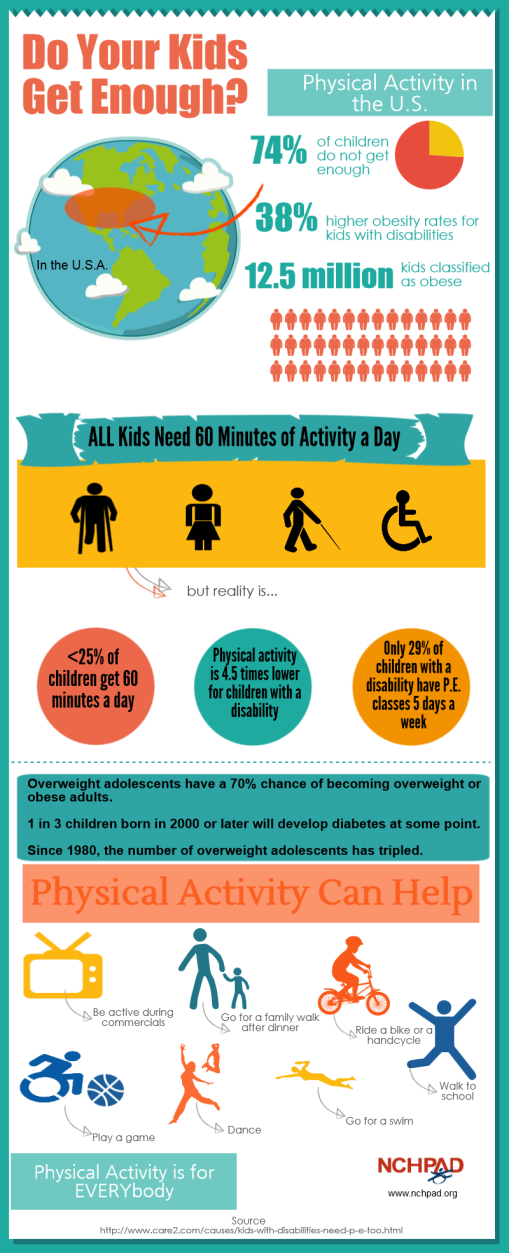Positive health-related outcomes can be achieved by participating in physical activity. There is evidence supporting that children’s participation in physical activity at home, school, and in the community relates to well-being, quality of life, and physical and social development 2. Through social interactions in different social contexts, children are capable of acquiring knowledge and skills necessary to engage in interactions with their peers.

Children with disabilities can also benefit from parental engagement in physical activity. A review study by Piškur and colleagues reported that parents of children with physical disabilities can facilitate engagement in physical activity by “choosing meaningful activities for their child”, “advocating” for the child, “educating” the social environment, and “networking” with other people. Parents often face challenges in the environment such as “attitudes of other people,” “insufficient system support,” and “barriers in both the natural and built environments”. Parents frequently experience difficulty in finding suitable educational systems and meaningful activities for their children that support participation outside of the home.
Unfortunately, children with disabilities experience exclusion of physical activity participation. They participate less frequently in almost all activities compared to children without physical disabilities (see infographic below). As a result, they have fewer opportunities building relationships and often feel socially isolated. The disparity in physical activity participation for children with disabilities augments the importance of parental engagement in physical activity.

